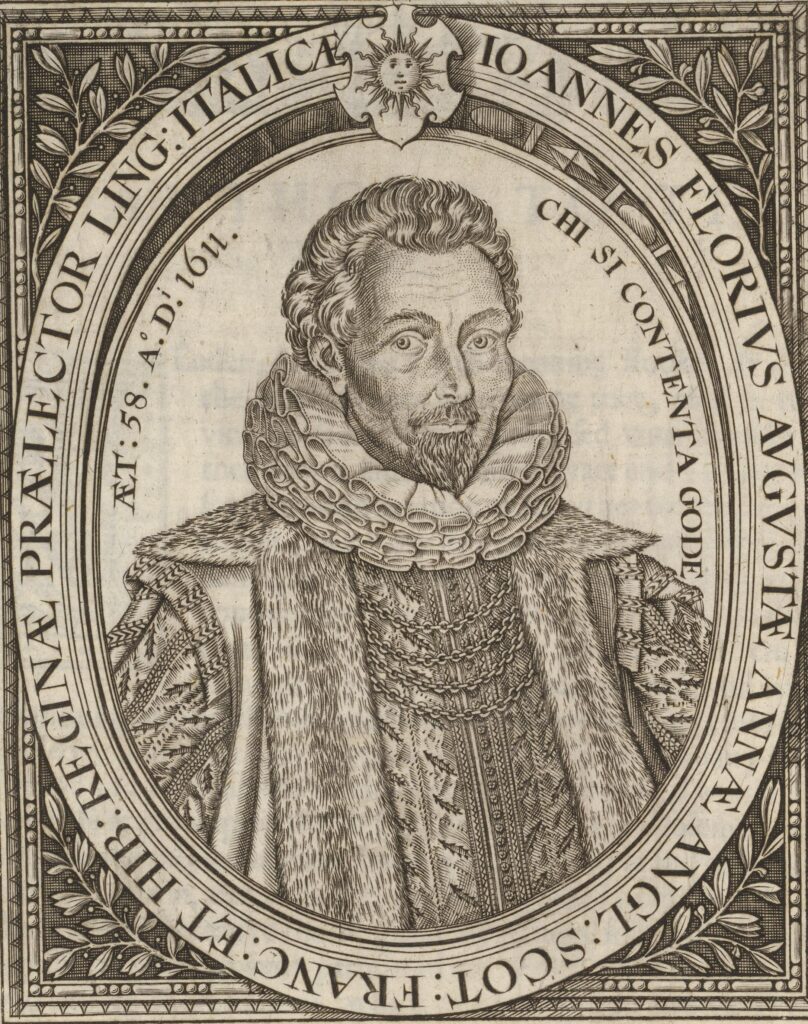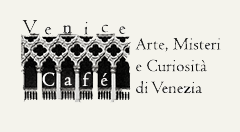In 1620 the English translation of Boccaccio’s Decameron was published anonymously in London by John Florio. The handsome folio was printed in two volumes, adorned with woodcut illustrations of French origin. The printer was Isaac Jaggard, and the dedicatee Sir Philip Herbert, Earl of Montgomery, to whom is also addressed an ‘epistle dedicatory’, supposedly by the translator’s hand, which introduces the text as a whole and the translated text at the beginning of Volume I.
There’s also a second dedication by the translator, which forms part of the front-matter of the second Volume; finally, the printer’s address “to the reader”, presumably written by Isaac Jaggard. Only the author and the printer are mentioned, but here ‘author’ can refer only to the translator, the individual who delivered “a ragged written copy” to the printer.
However, neither the author’s name nor the translator’s appears in the text. There is more. The only reference to the fact that the book is a translation occurs in the second dedication at the beginning of Volume II: “unusual for the time as it is, the translator declined to be identified.” 1
But in 1953, Herbert G. Wright published The First English Translation of the Decameron (1620), the first (and last) book that analysed the style of the anonymous translator in Decameron, attributing the creative, rhythmic and florid hand to John Florio by a comparative study of the respective style and techniques used in the text by the Anglo-Italian.
The reason why such an outstanding Italian language expert and translator would not put his name to the prestigious Italian’s masterpiece is found, according to Wright, in the desire to not be associated with an immoral book:
“It must be emphasised that English translators of the Decameron long remained unwilling to state who they were, and, indeed, it was not until the nineteenth century that this responsibility was taken.” 2
Similarly, Florio’ scholar Donatella Montini has underlined that Florio:
“Was engaging in the translation of a work considered controversial and containing offending material, might have been cautious about claiming its paternity.” 3
There may be another reason for the lack of attribution, though. According to Guyda Armstrong:
“It is possible that the printer had obtained a manuscript made by Florio without indications of authorship, perhaps made at an earlier date; we might even conjecture that this could be linked to John Wolfe’s mysterious disappearing Decameron of 1587.” 4
The right to publish an edition of the Decameron was already licensed to John Wolfe in 1587, but only on March 22nd 1620, was an entry made in the stationers’ register authorising the publication of «A booke called the Decameron of master John Boccace, Florentine» 5
John Florio’s English translation of Decameron: Sources
Some Florio’s scholars, like Michael Wyatt, agree with Wright, and his work carried such conviction that it has never been challenged, so today John Florio is acknowledged to be the translator in question.
The fact that he brought the manuscript of Decameron in 1587 to John Wolfe proves he was already well acquainted with Boccaccio when he published Second Fruits in 1591. And indeed, in his second work, twelfth chapter “On love and women”, Florio provides a nonchalant quotation which shows his familiarity with the Italian author:
And therfore Bocace saith wel:
to make thy horse to runne, and thy wife to stop,
Giue him the spurre, give her the holly crop 6
In the half-century since Wright’s work, we have since learned more about Florio which provides further evidence of his fingerprints in a text. His devotion to Stoic philosophy, particularly the notion of “constancy” and the virtue of “following nature” are often present in his works. Wright also went to some trouble to demonstrate that Florio had used every version of Boccaccio’s Decameron available to him to render his translation. He would never use just one edition if he could find three. Decameron was made with the 1582 revisionist edition Boccaccio’s novelle issued by Leonard Salviati and a committee of Florentine editors under his supervision in one hand, and Antoine de Maçon’s French translation for Marguerite de Navarre in the other. 7
The main difference between Florio and his predecessors is in the censoring technique. While his colleagues deleted the stories and replaced them with asterisks, Florio subtly censored them, and rewrote them, specifically two stories: tale number ten of the third day, the novel about Alibech and Rustico, was replaced with a story borrowed from Francois de Belleforest’s Histoires Tragiques, precisely the number 75: “The wonderfull and chaste resolved continency of faire Serictha, daughter to Siwalde King of Denmark,”. There are some lines in which Florio translated the story from French to English without the slightest alteration.
The novella about the Baronci Family, number six of the sixth day, was also rewritten, even if it didn’t contain any obscene material. Wright believed that Florio removed it because he considered it to be rather dated in its appeal, since it concerns a famous family from 14th-century Florence.
John Florio’s English translation of Decameron: Method
Wright especially noticed how Florio was not afraid to change Boccaccio’s words to achieve a more floral, bombastic, and rhythmic version of an idea, thanks to his love for doublets, rhythmic and balanced sentences, altering Boccaccio’s words, and preferring a less literal and freer translation to achieve his idea of style. He also couldn’t conceive word pattern without sound pattern, so when Boccaccio ends his tales with a song, Florio is not afraid to “translate” and turn them into sonnets, with music, rhythm, and a love for alliteration that is not found in Boccaccio. 8
Florio is defined as “a musical lexicographer” and his translation “a process of re-creation”:
“His amazing linguistic resourcefulness and his sensitive ear combine in a style that is as racy and vigorous as it is balanced and rhythmical. Its sustained alliterative unity lends point to colloquial speech and enhances the dulcet gravity of the loftier moments” 9
Wright goes on to compare their stylistic choices: the real and the presumed translator are evaluated especially according to their use of alliterations, repetition and rhyme. According to Montini:
“Florio’s refashioning of Boccaccio is accomplished by precise, repeated devices: by heaping synonymic nouns, adjectives and verbs; by recurrently using compound epithets; by his love for alliteration; by explaining what was not explicit; by adding clauses, aiming at adding meaning by amplifying the source text.” – 10
When he speaks Florian English, Boccaccio’s Decameron is rendered with an homogeneous, pervasive strategy of addition and expansion, which is very similar to what the translator had done in his English translation of Montaigne’s Essays. With John Florio, Boccaccio’s Decameron could hardly find a better rendering.
Bibliography
Armstrong, Guyda. The English Boccaccio: A History in Books. Toronto: University of Toronto Press, 2013.
Florio, John. Second Fruits. 1591
Iannaccone, Marianna. John Florio’s Italian & English Sonnets. Lulu Edition, 2021.
Montini, Donatella. “John Florio and the Decameron: Notes on Style and Voice.” In Boccaccio and the European Literary Tradition, edited by Piero Boitani and Emilia Di Rocco. Roma: Edizioni di Storia e Letteratura, 2014.
Wyatt, Michael. The Italian Encounter with Tudor England: A Cultural Politics of Translation. Cambridge: Cambridge University Press, 2005.
Wright, G. The First English Translation of the Decameron (1620). Uppsala/Cambridge Mass.: Harvard University Press, 1953.
Notes
- Montini, Donatella, John Florio and the Decameron: notes on style and Voice, in Boccaccio and the European literary tradition, edited by Piero Boitani and Emilia Di Rocco, (Roma, Edizioni di Storia e Letteratura, 2014)
- Wright, G., The First English Translation of the Decameron (1620), Uppsala/Cambridge mass, (Harvard University Press, 1953), p. 258.
- Montini, Donatella, John Florio and the Decameron: Notes on Style and Voice, p. 91
- Armstrong, Guyda, The English Boccaccio: A History in Books, (Toronto: University of Toronto Press, 2013) p. 219
- Montini, Donatella, John Florio and the Decameron: notes on style and Voice, 2014.
- John Florio, Second Fruits, 1591, Chapter 12
- M. Wyatt, The Italian Encounter with Tudor England: A Cultural Politics of Translation, Cambridge 2005 (p. 221).
- Iannaccone, Marianna, John Florio’s Italian & English Sonnets, Lulu Edition, 2021.
- Wright, G., The First English Translation of The Decameron (1620), Uppsala/Cambridge Mass, (Harvard University Press, 1953)
- Montini, Donatella, John Florio and The Decameron: Notes on Style and Voice, 2014.




